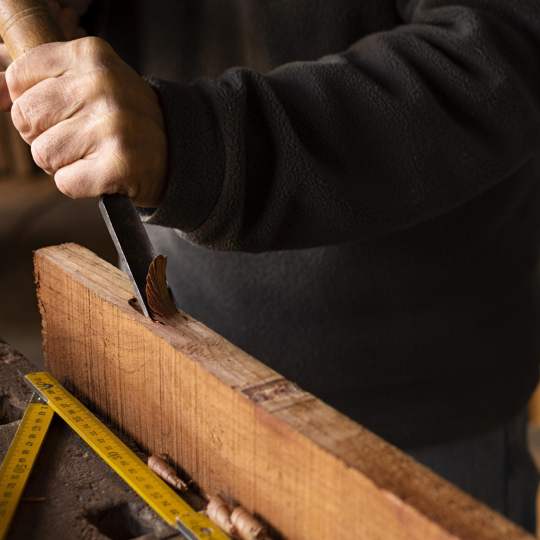
Have you ever considered giving a worn-out wooden chair a bright and cheery makeover? A rewarding and enjoyable do-it-yourself activity that gives your furniture new life is painting a wooden chair. In this article, we’ll provide you with some useful advice on how to make your wooden chair into a magnificent object and how to paint a wooden chair at home that embodies your sense of style. So grab your paintbrushes and let’s get started!
Introduction
Painting a wooden chair can be a rewarding DIY project that breathes new life into an old piece of furniture. Whether you want to update the chair’s appearance or protect it from wear and tear, painting is an excellent option. Here are some tips to achieve a professional-looking finish. So let’s grab our brushes and get started!
1. Materials and Tools:
Before you begin, gather the following materials and tools:
- Wooden chair
- Sandpaper (medium and fine grit)
- Tack cloth or a clean cloth
- Primer
- Paintbrushes (bristle or foam)
- Paint of your choice
- Paint tray or container
- Painter’s tape
- Drop cloth or newspaper
- Sealer (optional)
- Screwdriver (if the chair needs disassembling)
- Cleaning supplies (soap, water, sponge)
2. Preparing the Chair:
Start by preparing the chair for painting:

- Place the chair on a drop cloth or newspaper to protect the surrounding area.
- If the chair has cushions or fabric elements, remove them.
- Use a screwdriver if necessary to remove any part, such as the seat or backrest.
3. Sanding the Surface:
To ensure the paint adheres properly, sand the wooden chair:
- Begin with medium-grit sandpaper to remove any existing finish, rough spots, or imperfections.
- Sand in the direction of the wood grain to avoid creating scratches.
- After sanding the entire surface, switch to fine-grit sandpaper to achieve a smooth finish.
- Wipe away the dust with a tack cloth or a clean cloth.
4. Priming the Chair:
Applying primer is crucial for better paint adhesion and long-lasting results:
- Choose a primer suitable for your chair’s material (wood, metal, etc.).
- Apply an even coat of primer using a paintbrush or foam roller.
- Follow the manufacturer’s instructions regarding drying time between coats.
5. Choosing the Right Paint:
Selecting the right paint is essential for a successful chair painting project:
- Consider the chair’s location and purpose (indoor or outdoor use).
- Water-based latex paints are a popular choice for their ease of use and quick drying time.
- Oil-based paints provide a durable finish but require more ventilation and a longer drying time.
- Opt for paint with a satin or semi-gloss finish for easier cleaning and maintenance.
6. Applying the Paint:
Now it’s time to apply the paint to your wooden chair:

- Stir the paint thoroughly to ensure an even consistency.
- Dip the brush into the paint and remove the excess by tapping it against the side of the container.
- Start painting from the top and work your way down, using long, smooth strokes.
- Paint the hard-to-reach areas first and then move to larger surfaces.
7. Applying Multiple Coats:
- Apply several coats of paint to achieve a smooth surface. Once the first coat has dried, gently sand the surface with fine-grit sandpaper.
- Wipe away the dust with a tack cloth or a clean cloth.
- Apply subsequent coats of paint, following the same technique as before.
- The number of coats required depends on the desired color intensity and coverage.
8. Adding Decorative Finishes:
If you want to add decorative touches to your wooden chair, consider these options:
- Use painter’s tape to create stripes, patterns, or borders.
- Experiment with stencils to add intricate designs.
- Apply a second paint color for a contrasting or complementary effect.
- Use a small brush for detailed work or a sponge for a textured finish.
9. Allowing Proper Drying Time:
Patience is key when it comes to drying the paint on your wooden chair:
- Follow the paint manufacturer’s instructions for drying time between coats.
- Let the final coat dry completely, and then move on to the next step.
- Adequate drying time ensures a durable and long-lasting finish.
10. Sealing the Paint:
While optional, sealing the paint provides additional protection:
- Choose a clear sealer suitable for your chair’s location (indoor or outdoor).
- Apply the sealer if you think it is necessary.
- Sealing the paint enhances its durability and makes it easier to clean.
11. Reassembling the Chair:
If you disassembled any parts, now it’s time to put them back together:
- Ensure that the paint is fully dry before reassembling the chair.
- Use a screwdriver to reattach any screws or bolts securely.
- Place the cushions or fabric elements back onto the chair, if applicable.
12. Cleaning Up:
Properly clean up after completing your painting project:
- Clean your brushes with soap and water or the appropriate solvent.
- Dispose of any used paint containers or materials according to local regulations.
- Remove the drop cloth or newspaper and clean the surrounding area if necessary.
Maintenance Tips
To keep your painted wooden chair looking its best, follow these maintenance tips:
- Wipe spills or stains promptly with a damp cloth.
- Avoid dragging or scratching the chair on hard surfaces.
- Use furniture pads or coasters to protect the chair’s legs from damage.
- Regularly dust the chair to prevent the accumulation of dirt and debris.
Common Mistakes to Avoid
Here are some common mistakes to avoid when painting a wooden chair:
- Skipping the sanding process can result in poor paint adhesion.
- Applying paint too thickly leads to drips and an uneven finish.
- Neglecting to prime the chair, can cause the paint to peel or chip.
- Rushing the drying process may result in smudges or damage.
You may also like
Conclusion
So, there you have it, people. This was our take on How to Paint a Wooden Chair. Painting a wooden chair can transform it into a beautiful and functional piece of furniture. By following the steps outlined in this article, you can achieve professional-looking results even if you’re a beginner. Remember to take your time, choose the right materials, and follow proper techniques. With a little patience and creativity, you’ll soon have a painted wooden chair that adds a touch of style to your space.
FAQs
Q1: Can I paint over a wooden chair with an existing paint finish?
A1: Yes, you can paint over an existing paint finish. However, make sure to clean and lightly sand the surface to ensure proper adhesion.
Q2: Should I use a brush or roller to apply paint to my wooden chair?
A2: Both brushes and rollers can be used for painting a wooden chair. Brushes are ideal for detailed areas, while rollers are suitable for larger surfaces.
Q3: How long should I wait between coats of paint on my wooden chair?
A3: Adhere to the drying time recommendations made by the paint manufacturer. Generally, it’s recommended to wait a few hours between coats.
Q4: Can I paint a chair without sanding it first?
A4: While sanding is not always mandatory, it helps create a smoother surface and better paint adhesion, resulting in a more professional finish.
Q5: How can I remove paint drips or mistakes?
A5: If you notice any paint drips or mistakes while painting, wait for the paint to dry and lightly sand the area. Then, touch up the spot with additional paint.





























